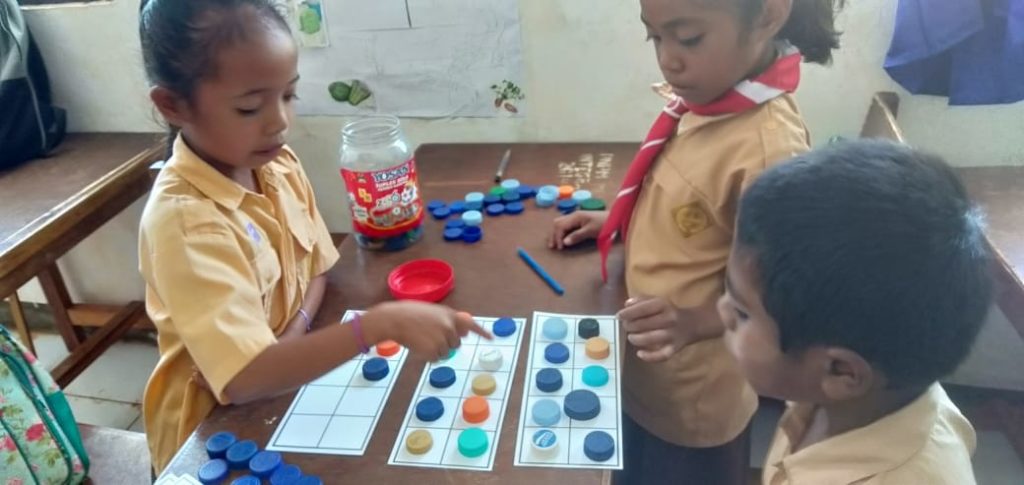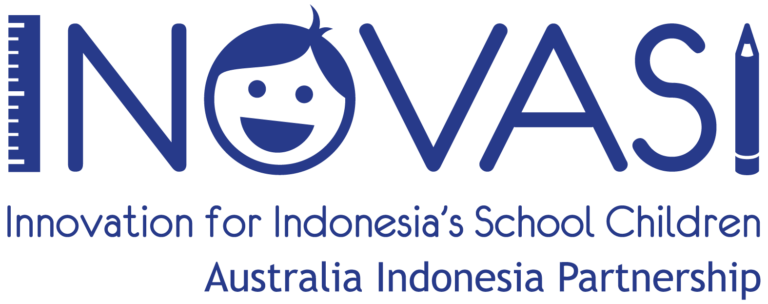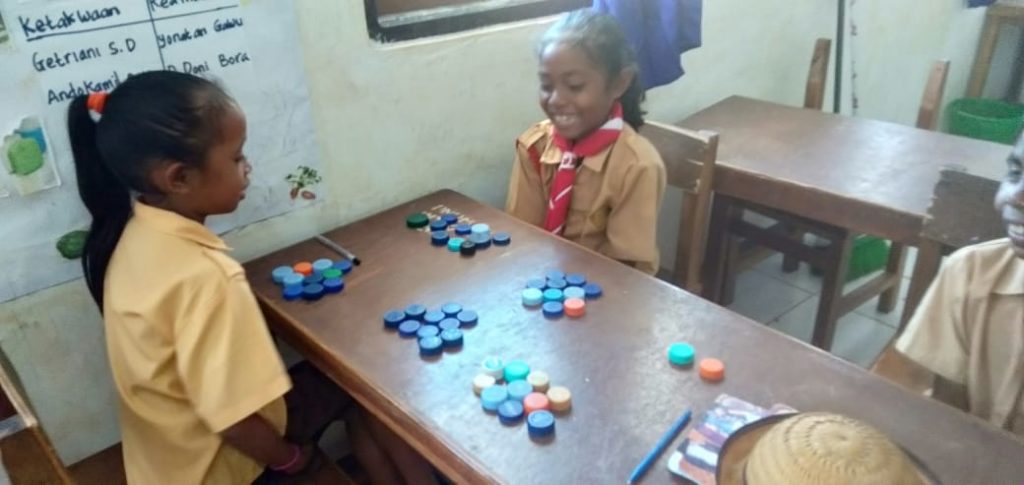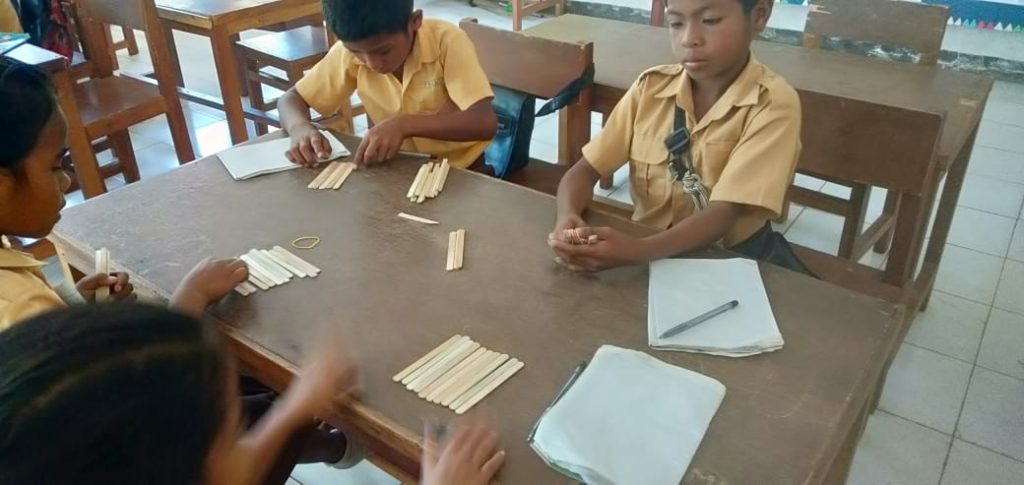
One of the ways to do this is by using learning tools or media, which can take many forms. It would be interesting, however, if the teaching media that teachers chose to use came from the school’s surrounding. This is what the early grade teachers at SD Inpres Ndapa Taka state elementary school in Southwest Sumba regency, East Nusa Tenggara (NTT) are doing.
Given the existing limitations, these early grade teachers have created an easy way to count by using teaching media in the form of bottle caps, discarded blocks of wood from the local workshops, and seeds that are often found around the school and the students’ homes.
These items are collected and used in class for arithmetic lessons. The collected items are also used to introduce students to geometric shapes and for reading purposes.
Even though this seems simple, this innovation in numeracy by using local materials has actually made a significant impact, including the raised interest of students in arithmetic lessons. This is a far cry from before, when the children seemed passive, not showing interest in their numeracy lessons. And it’s not just the students—the teachers also feel that their ability to teach math has improved.
The teachers have learned how to apply active learning by using the MiKIR (Mengalami, Interaksi, Komunikasi dan Refleksi) strategy: Experiencing, Interacting, Communicating, and Reflecting. The once classic learning approach is now varied by forming small groups of students who have the same level of abilities.
Nengsy Puspita N. Henuk, who teaches in grade two, explains this: “The formed groups are adjusted to the students’ abilities. These groups allow students to apply the MiKIR learning strategy and become more engaged.” Nengsy says that she also provides students with lesser abilities the opportunity to come to the front of the class in order to cultivate their self-confidence.
“In my class, math lessons are taught for 6–8 hours a week. The INOVASI program in our school has really helped us in delivering lessons, especially related to numeracy,” says a teacher who has earned a bachelor’s degree in teacher education.
In line with Nengsy’ teaching approach, Cornelia Ina Iki, the Principal of SD Inpres Ndapa Taka, says that using such media has made children more enthusiastic to learn.
“Now the children are so enthusiastic. When we start doing arithmetic using blocks of wood, the students become more engaged and understand more quickly,” says Cornelia, who is also the regional facilitator (fasilitator daerah, or Fasda) for the early grade numeracy program.
Cornelia continues, “In the past, we used old methods like recognizing numbers and counting on the blackboard or other methods that we thought of ourselves, but now we are making such innovations [using real objects as learning aids]. Before, we as teachers thought in a more complicated manner. We thought that teaching aids needed to be bought, but we’ve learned that, in fact, we can create them ourselves; they are available all around us. And it’s not just wooden blocks; it’s flower pots, leaves, sticks, and a number of other items that can be used as a learning media to teach children how to count.”
Cornelia admits that the students’ daily activity that revolves around these objects is what inspires her and other teachers to use them for learning. From this experience, Cornelia learned that knowledge doesn’t come from teachers alone.
“We are aware that knowledge can also come from the students. They show us how they should learn,” concludes Cornelia.








